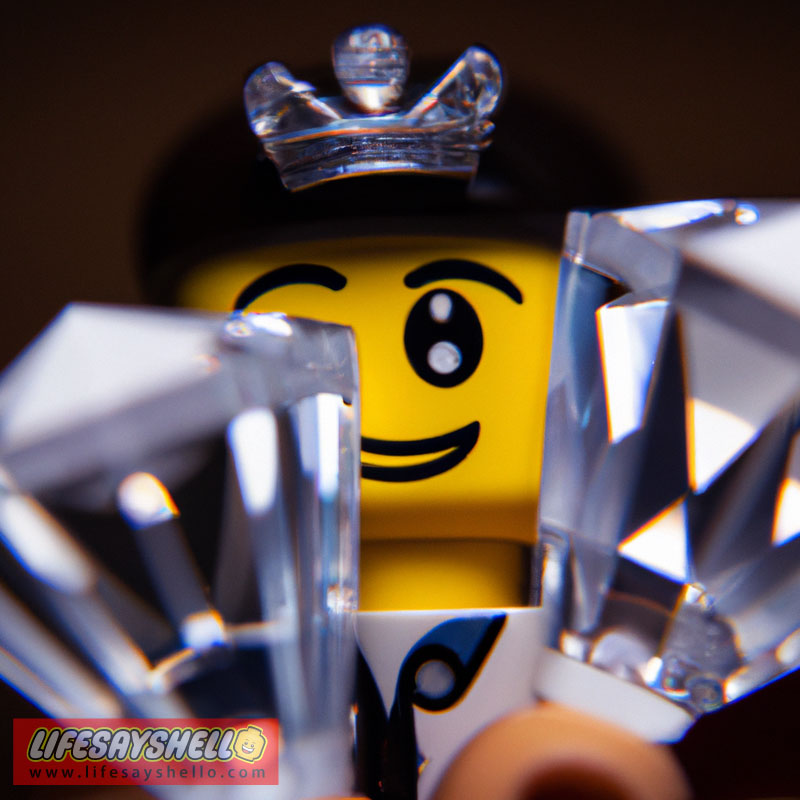Unearthing the World's First Diamond: The Fascinating History of Diamond Origins

For centuries, diamonds have captivated humankind with their stunning brilliance and extreme rarity. But where did these treasured gems originally come from? This article will take you on an exciting journey through history to uncover the story behind the very first diamond found on Earth.
Introduction
Diamonds have signified wealth, power and romance across countless cultures for thousands of years. The diamond's unparalleled hardness and scintillating fire have made it the most coveted gemstone on Earth.
But diamonds didn't just appear out of thin air. These enigmatic crystals have a geological history spanning billions of years.
So where were diamonds first discovered? How did humanity uncover the existence of these hidden gems? Let's start at the beginning and follow the trail of evidence that leads to the world's inaugural diamond discovery.
India: The Earliest Known Source of Diamonds
The earliest diamonds likely originated in India. Archaeological evidence indicates diamonds were first identified in India around the 4th century BC, over 2,400 years ago.
India remained the only known source of diamonds for centuries. The precious gems were found scattered in the rivers and streams of Golconda, in central-southern India. Golconda was the capital of ancient kingdoms like the Kakatiyas and ruled by successive dynasties.
The Kakatiya dynasty heavily promoted diamond mining in the region. By the 14th century, Golconda was one of the main diamond hubs in the world. Enormous diamonds like the Koh-i-Noor and Hope Diamond originated here.
Diamonds from Golconda were prized around the world for their limpid clarity and dazzling brilliance. India dominated the global diamond market for over a millennium until deposits began dwindling in the 18th century.
The Hunt for New Deposits Begins
By the early 1700s, Golconda's diamond reserves were nearly exhausted. With demand still strong, the quest began to find new sources of the precious crystals.
In 1725, a small deposit of diamonds was discovered in the rocky hills of Minas Gerais, Brazil. But the yield was disappointingly low, just a few carats a year. Nowhere near enough to satisfy global demand.
The diamond supply crisis intensified. Prices for the increasingly scarce gems skyrocketed. With India's supplies tapped out, the race was on to uncover new diamond deposits.

The Eureka: South Africa's Game-Changing Discovery
In 1866, a 15-year-old South African boy named Erasmus Jacobs made a fortuitous discovery that would forever change the trajectory of diamond mining.
While playing along the banks of the Orange River near Hopetown, Jacobs spotted an unusual glittering pebble. It turned out to be a massive 21.25 carat diamond. It was the very first diamond uncovered in South Africa.
News of Jacobs' find triggered a frenzied diamond rush to the region. The area was soon swarming with prospectors vying to strike it rich. Within just a few months, two massive diamond deposits were uncovered along the Orange River.
In 1871, an even larger 83.50 carat diamond was unearthed on a shallow hill in Hopetown. Dubbed the "Star of South Africa," this stone signaled that the area was tremendously diamond-rich.
The unprecedented discoveries sparked a diamond rush of thousands more fortune hunters and the establishment of mining towns and camps. The boom kickstarted the Mineral Revolution, transforming South Africa's economy and infrastructure.
The Kimberley Mine: Epicenter of the Diamond Frenzy
As more huge diamonds were found along the Orange River, prospectors traced the precious stones upstream to their source. In 1871, miners located the origins near Kimberley hill, site of the famed Big Hole mine.
The Kimberley mine soon became the epicenter of South Africa's chaotic diamond rush. At its peak, there were over 50,000 miners digging feverishly in and around the mine's enormous crater.
Raw, unregulated mining led to conflicts between claim holders. To restore order, Cecil Rhodes and Charles Rudd formed the De Beers Mining Company in 1888. De Beers gained control of most South African mining operations and dominated global diamond production for over a century.
South Africa Transforms the Diamond Trade
The unprecedented scale of South Africa's diamond reserves transformed the entire diamond trade. In the late 19th century, South Africa accounted for over 95% of the world's diamond production.
The new flood of South African diamonds also changed how they were valued. With diamonds no longer exceptionally scarce, prices stabilized. This made diamonds more accessible and popularized diamond engagement rings.
By the 1920s, South Africa was producing over 3 million carats annually, eclipsing India's dwindling output. The nation remained the top diamond producer until the early 2000s when Botswana took over the top spot.
South Africa still ranks among the top five diamond producing countries today. As of 2022, around 7% of the world's natural diamonds originate from South African mines.
The discovery of South Africa's diamond bonanza democratized diamonds in many ways. But it came at a heavy cost, fueled by poor labor practices and racial inequities.
Under apartheid, black South Africans were excluded from legal mining work. This led to widespread illegal artisanal mining with dangerous conditions and vulnerable workers exploited by illicit diamond trade.
Reforms have improved ethical mining practices and working conditions. But challenges remain to ensure the fair distribution of diamond wealth in local communities. Ongoing progress relies on cooperation between government, industry and civic groups.
The Legacy of South Africa's Diamond Discovery
The unearthing of South Africa's superlative diamond reserves irrevocably changed the course of world history. It set off an unprecedented diamond rush that gave rise to De Beers' stronghold and transformed global diamond supplies and valuations.
The effects are still evident today in South Africa's regional economy and development. For better or worse, the diamonds unlocked by Erasmus Jacobs' chance find of the Eureka forever altered South Africa's trajectory.
Jacobs likely had no clue that the glittering stone he plucked from the Orange River would unleash a frenzy of exploration and exploitation that still impacts global politics and economics today.
Over 150 years later, South Africa's diamond fields remain among the richest on Earth. That serendipitous discovery by a teenaged boy helped satisfy worldwide demand for diamonds as adornments of beauty, power and romance.
In many ways, the fascinating history of diamond origins traces back to Jacobs' fateful find on the banks of the Orange River. Unknowingly, his "Eureka!" discovery opened the floodgates to the world's original source of diamonds.
South Africa's diamond reserves also enabled critical technological advances. Diamond mining funded large-scale infrastructure like railways and roads to transport the precious cargo safely under heavy security.
State-of-the-art mining equipment and methods were pioneered to maximize productivity and efficiency. De Beers remains at the forefront of developing new diamond detection and extraction technologies.
Beyond mining, industrial uses were found for lower grade diamonds. Thanks to their unparalleled hardness, diamonds revolutionized applications like cutting, drilling, grinding, and polishing.
Scientific discoveries also emerged from studying diamond chemistry and physics. Diamond research led to advances in semiconductor technology critical for electronics. The development of synthetic diamonds for industrial uses stemmed from these efforts.
On the darker side, the struggle for control of South Africa's diamond wealth enabled the imperialist expansion and atrocities of Cecil Rhodes and the British Empire. This conflict-ridden history still scars regional politics today.
But South Africa's diamonds have also helped fund remarkable accomplishments. Diamond mining profits enabled pioneering heart surgery by Dr. Christiaan Barnard and the first human heart transplant in 1967.
While complex socioeconomic problems remain, South Africa's diamonds have provided educational and community development opportunities to help address historical inequities.
From geology to glamour, electronics to engineering, South Africa's diamond bonanza has profoundly shaped science, technology, culture and history over the past century and a half. The legacy of the very first diamonds discovered on its rugged terrain will continue to sparkle for generations to come.




Comments